Where the Pets and Plants Go
I mentioned the new Venti Bowl from leafjoy, Proven Winners’ houseplant brand in cooperation with The Plant Company, in last week’s buZZ newsletter (read it HERE if you haven’t already). While meeting with Proven Winners’ Jeanine Standard and The Plant Company’s Ben Wright during Cultivate, both had brought up a program they began last November with pet store Petco. Now, when I think of plants and pets together, I automatically think of cat grass. With a confused “How are these two companies connected with cat grass?” look on my face, they explained that the program does indeed bring houseplants to the store “where the pets go.”
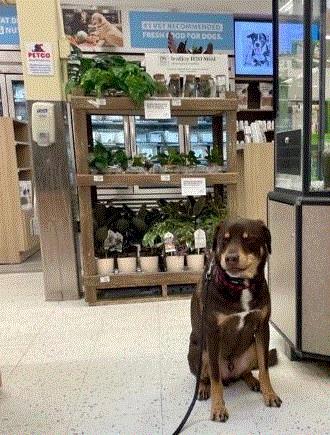
Ben recalls Proven Winners’ numbers and marketing guru Marshall Dirks mentioning a stat they found several years ago: 83% of plant owners also own a pet. “We thought [houseplants] would hit the mark with pet owners,” Ben said. So, The Plant Company reached out to Petco’s live goods buyers to pitch the possibility of houseplants at their stores.
“Petco really liked the idea of pet parents and plant parents having a lot in common,” Ben told me in an interview this week. “We like to say that children are now the exotic animals, pets are the children and plants are now the pets. You see it all over social media. I may have a hard time getting a dog because I have a rental apartment but I still have this nurturing side to me, so what do I get? I get plants.”
The Plant Company originally brought them the H2O Minis line, which are cork-capped tubes with small houseplants growing hydroponically, because consumers (and the store managers) wouldn’t have to worry about pets getting into the plants. “We then sent samples of some of the other items and there was an opportunity for a larger program than initially envisioned,” Ben added.
“The H2O Bowls and the H2O Minis are great entry points for first-time houseplant owners as these are plants that don’t typically require a lot of sun,” Jeanine added. “They can go on a shelf, a bookcase, in the bathroom. And they don’t require water frequently because their roots are already in water in the glass.”
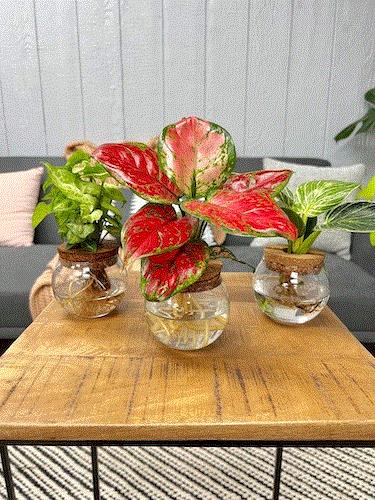
leafjoy's H2O Bowls
Initially the Petco program was supposed to be a one-time holiday shipment for November 2022, going to about 1,000 Petco location nationwide. “It went better than expected,” Ben explained. Petco came back to them saying the program was doing well and they wanted to target specific stores that experienced better sell-through than others. Now they are shipping out between 100-300 cases of H2O Minis, H2O Bowls and 12 cm. leafjoy houseplants to 765 Petcos throughout the country every week. All leafjoy varieties are available except the alocasias due to potential toxicity issues.
Of the plant parent-pet parent link, Jeanine says it’s a great connection. “The more we can support that need to nurture, the more people are going to get the confidence to work with plants. And we hope that if they are successful with houseplants then they will move to trying a container on the patio and beyond.”

Cultivation Station: White Bird of Paradise
This month’s “Cultivation Station” features the plant that makes you marvel about the intricacies of plant evolution. The topic of Strelitzia nicolai, or the giant white bird of paradise plant, came up when I visited the Evanthia booth at last month’s Cultivate show. When asked what was new at the tropical young plant and seed company, Marvin Grootendorst eagerly explained their new and improved germination rate for this plant. The germ rate has always been a struggle, with 10-20% being an average and typical rate. They’ve now employed an upgraded treatment method, which can give them upwards of a 40% germination rate. That is indeed an upgrade! As far as Marvin knows, Evanthia is the only provider of S. nicolai seed that is offering this treatment.
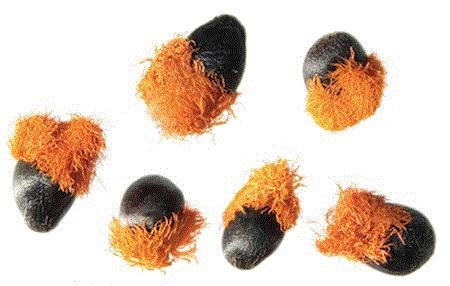
If you aren’t all that familiar with Strelitzia nicolai, this native of subtropical South Africa has fewer but larger banana-like leaves than S. reginae types. Because of its height, Strelitzia nicolai is commonly known as Giant Bird of Paradise. Its long-lasting blue and white flowers usually appear 3-5 years after germination. Evanthia offers both Strelitzia nicolai seed and young plants.
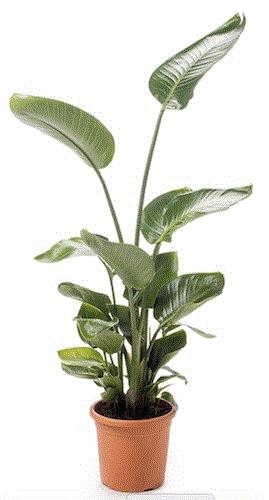
While growing plugs from seeds can be challenging, Evanthia has tons of experience and can offer you a cultivation manual. Meanwhile, here are some of the basics:
From plug to young plants: 14-20 weeks
From young plant to finish: 25-78 weeks
Cultivation period: Year round
Pot size: 13-32 cm
Plant height: 40-250 cm
Temperature: 68-72F
You can request a S. nicolai cultivation manual from Evanthia by clicking HERE, scrolling down and choosing “Downloads.” If you are interested in seeds, I believe they have a special offer going on at the moment. Find out more about that HERE.

Something a Little Easier
Our friends at National Garden Bureau have our backs when it comes to trends. You’ll be seeing tropical and foliage trendspotting tips from NGB within Tropical Topics on a regular basis (thank you, NGB!), and today’s trendspotting tip could very well be the direct opposite of S. nicolai.
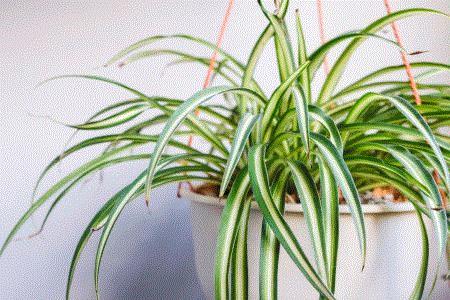
According to NGB, Pinterest searches for the term “spider plant” increased more than 26% over the 30-day period ending at the end of July. You can’t get more consumer-friendly than a spider plant, and if Pinners are searching for it, you’ll know they are planning on purchasing or decorating with spider plants within the next month and a half. “Pinners are planners,” is what Diane Blazek and Gail Pabst at NGB tell me. They “start searching on Pinterest twice as early as on other platforms. So at least 30-45 days ahead of time except for holidays (Christmas, Thanksgiving, etc.), that can be six months ahead.”

What can you do with this information?
-
Ramp up your spider plant production or order in to have on hand.
-
Make sure you set up a spider plant display or have your sales team pitch spiders.
-
If you’re a retailer, have decorative glasses and such for consumers to try water propagation at home.
-
Create a social media video showing how to pinch and propagate spider babies. A stop-motion video with a room exponentially filling with spider plants would be super fun!
-
If we’re talking spider plants, we’re also talking macrame accessories. Stock up.
Other thoughts? Drop me a NOTE and I’ll share it next time.

The Latest on Thrips parvispinus
If you are growing your own tropicals, you may be wondering if the pest that is spreading like wildfire—Thrips parvispinus—is in your growing range. Dr. Sarah Jandricic, an IPM specialist at OMAFRA in Canada who has been working to understand this threat for the last few years, recently wrote up her latest findings for a blog post on the ONFloriculture.com website. “Got Tropicals? How to Detect and Monitor for Thrips parvispinus” explains which monitoring methods are most effective, helping you to identify the problem early. And from there you can begin a management plan and monitor how well your controls are working.
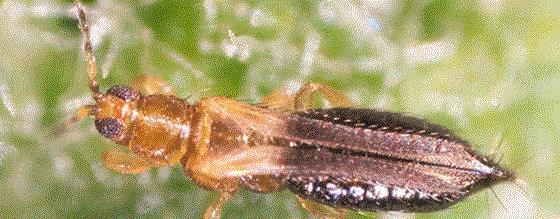
If you grow tropicals, then reading this post is a must so you can stay ahead of major infestations. Some of the highlights of the post include making yellow sticky cards your friends, the exact procedure for “plant taps” (pssst! Don’t forget to squish them after you count them!) and the importance of graphing your data.
If you’ve dealt with a T. parvispinus issue yourself or have any comments on this critter, drop me a note about it HERE. I’d love to hear some “in the field” experiences.
Comments, questions, suggestions? Email me about them at ewells@ballpublishing.com.

Ellen Wells
Senior Editor
Green Profit
This edition of Tropical Topics was sent to 29,776 loyal readers!
If you're interested in advertising on Tropical Topics, contact Kim Brown ASAP!